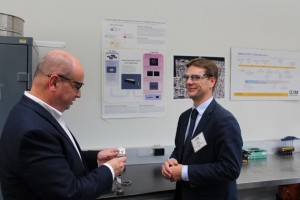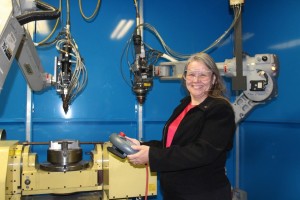Commonwealth Center for Advanced Manufacturing (CCAM) – an innovation zone for cutting-edge advanced manufacturing research, development and commercialization – recently hosted leaders from industry, government and academia at an Additive Manufacturing Day event at their facility in Prince George County.
Additive manufacturing, also known as 3-D printing, began as a prototyping technology. Today it has broad-reaching technological applications across industries.
Over 100 event guests took part in presentations on additive manufacturing trends, challenges and opportunities for collaboration, followed by a center tour and networking reception. Presenters included EOS, North Carolina State University, National Institute of Standards & Technology (NIST), NSI, Siemens, U.S. Navy and Virginia Tech.
“We are seeing a true integration of different disciplines – data sciences, mechanical engineering, material science, and cyber security – turning this technology into a manufacturing platform,” says Christopher Williams, Ph.D. and associate professor at Virginia Tech – one of five CCAM university members. “What excites me the most is a transition from using the technology to create new shapes, to using the technology to create new shapes with new materials. We’re finding completely new solutions to problems.”
Aaron Johns, account manager with Siemens PLM Software, agrees that the efficiencies gained by additive manufacturing have economic benefits. “In industry, we see customers using less material in production, making it cheaper in the long run for our customers to manufacture what they need.”
Founded in 2011 under a public-private partnership, CCAM is focused on accelerating production methods for leading manufacturers, helping create jobs and economic opportunities in Virginia and around the world.
Visit www.ccam-va.com and follow @CCAMVA on Twitter for more information.

CCAM Chief Technology Officer Jaime Camelio, Ph.D. (left), and Virginia Tech Associate Professor Christopher Williams, Ph.D. (right), discuss metal additive materials and build samples.

NASA Langley Research Center Materials Research Engineer Karen Taminger, Ph.D., learns about CCAM’s Direct Energy Deposition Capabilities
(photos courtesy of CCAM)